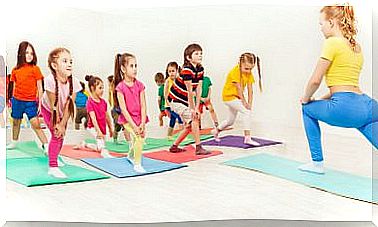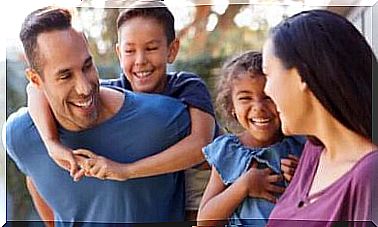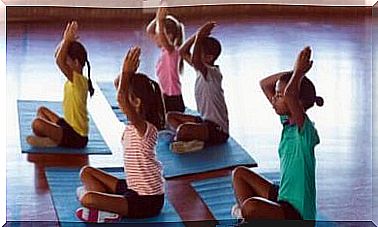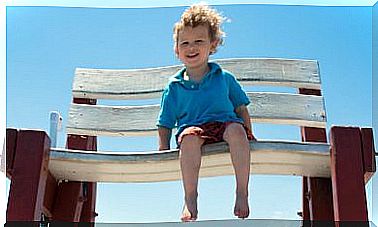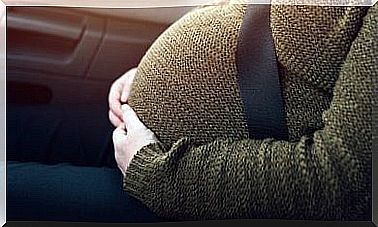How To Help Your Child Get Started
The baby’s nine months are a breaking point. From there, our son will start taking his first steps or, as soon as possible, trying to take those first steps. What started as a crawling walk continues in these nice little steps until one day he will be running all over the place.
When the child starts to walk, his unsteady little steps indicate a distance from mom and dad, which has its real but also symbolic importance, as these are the first attempts to achieve greater independence.
Obviously, we can help them walk safely. Therefore, here we will explain to you how to follow the child’s first attempts to stand up and her first steps, reducing her insecurity and your anxiety as a parent.
First steps, a milestone in your growth
This event is no less important in our children’s lives and, of course, in any parent’s life, as it marks the beginning of a new phase in which they will explore the world from their perspective. This beginning of a new phase arouses the parents’ disquiet about the dangers generated by the baby’s first steps.
Each baby performs, in its own time, a test of what that moment will be like. It is certain that it will be during the first year of life, when the child will already be able to turn around, sit, crawl and remain standing. In this evolutionary stage, the short one will seek support on objects to travel for short distances, which he will increase as he gains confidence.
And what about stretching out your arms for him to take these little steps to get to you, isn’t it an unforgettable moment for any parent? Still, it ‘s important that you don’t lose your temper, as it can take several weeks for your child to walk unaided.
The arrival of the first little steps
- At 8 to 10 months, attempts to walk begin, in which the child stands up holding what is in her path. Soon, lateral displacements begin, still leaning on objects, gaining coordination and balance. Allow him to experiment, encourage him, and celebrate his progress.
- When the child stands up, there is the inconvenience of not being able to sit down again. The less independent remain stationary and demand more help. For the child to gain more autonomy, teach him to act alone; by bending his knees he will understand how he is going to get “a softer landing”.
- While you should be careful about space security on your first few explorations, you shouldn’t avoid even the slightest hurdle. The baby thus learns to face and overcome difficulties, and in this case it is advisable to praise him and not dramatize the possible loss of balance, cultivating his self-esteem.
Help your baby take his first steps
Learning to walk overcomes the achievement of a new motor act, it represents a phase of psychological maturation that makes the child more autonomous and self-assured. So, in addition to these benefits, there are early stimulation exercises that help your baby through this big time.
- Standing behind the child, take him by the hand and accompany him when he walks. Standing by her side, she feels more secure in her quest for balance.
- Little by little, increase the distances between the supporting objects to go on adding little steps and extending her journeys.
- Lean her back against a wall or some secure piece of furniture and call her showing her favorite toy.
- Another good initiative is to place a box at her height to store toys. Nothing will entertain her more than putting on and taking out the games inside her, which will help her to stand up and keep her balance.
- As much as each fall of the baby hurts us as if we felt a bump in ourselves, it is inevitable that the little one suffers these falls before reaching balance. Just think that if you are around, your child will feel safe and secure.
- The space reserved for the first few steps is also important. Areas free of objects that could hurt them when taking their first steps are recommended. Therefore, the ideal is that they develop this learning on surfaces that are not hard, but that are firm: the lawn, rubber floors, and rugs are fantastic when starting this challenge.
Home security is critical
Once the environment where the child will take his first steps is observed, it is urgent to maximize the safety measures at home, eliminating all the dangers that are within his reach. It’s about creating an environment that is nurturing, but without letting our guard down or our watchful, critical eyes.
As we know, prevention is better than cure. Therefore, it is advisable to line the corners of furniture, remove fragile adornments, plug sockets, remove objects that may be dangerous, store alcoholic beverages, cleaning products and medicines in high places, and even put a safety catch that locks the doors and drawers.
Although it seems like an unimportant piece of information, the shoes he uses to take his first steps is also important. The ideal is that you take these first steps barefoot, but this is often not possible for different reasons.
In such cases, a shoe that protects your foot and provides balance and stability is suggested. The best would be comfortable shoes, soft and light, with a flexible sole that allows him greater freedom of movement.
What about walkers? Experts are currently against their use, not only because they are dangerous, but because it delays motor function because the child does not learn to support his body or exercise his balance, aspects necessary to take the first few steps.

